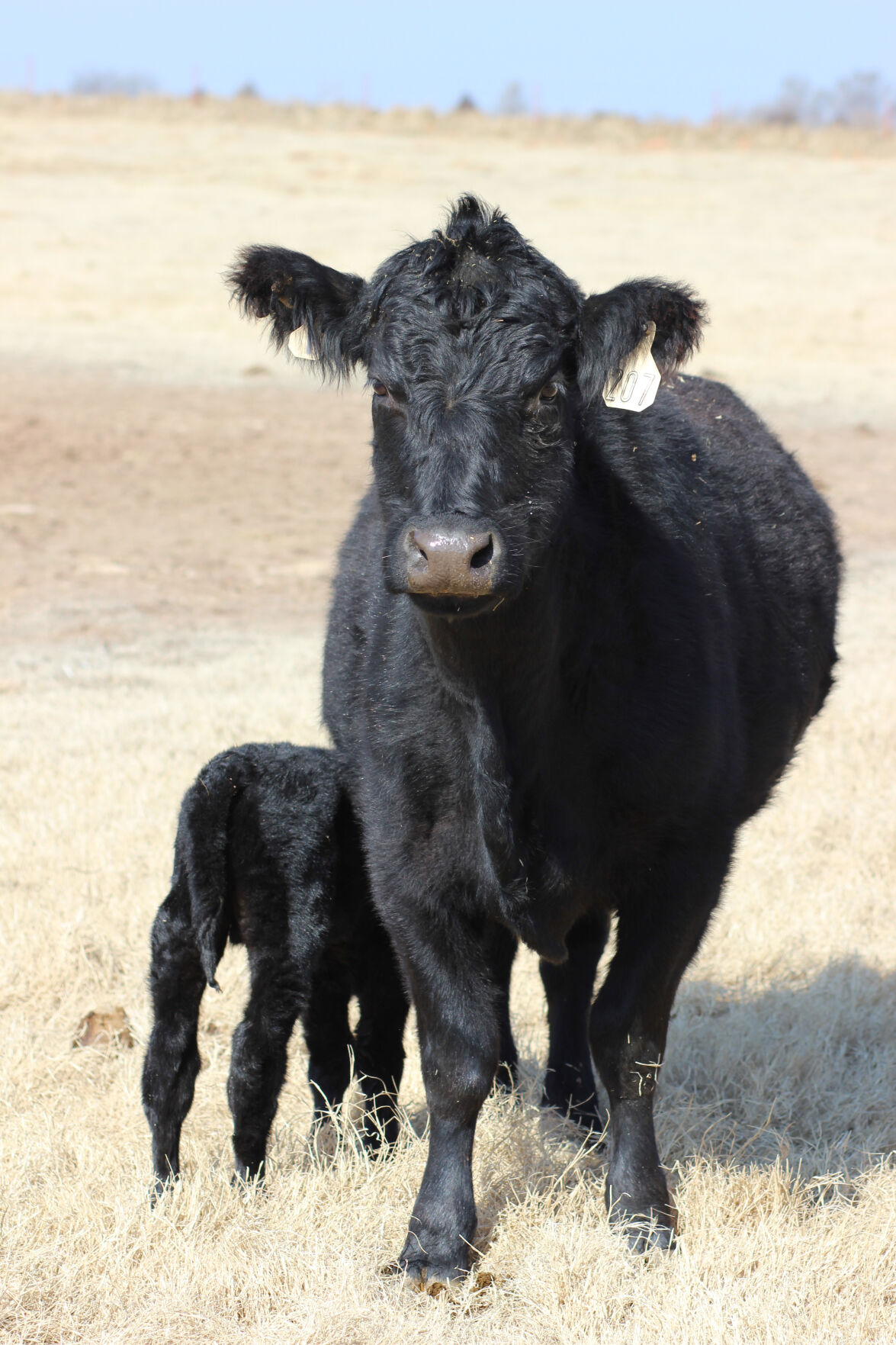Dr. A.J. Tarpoff, Extension beef veterinarian at Kansas State University, spoke recently at a virtual American Angus Association webinar that covered multiple aspects of calf health.
He said the first few hours of the calf’s life dictate its future health outlook and productivity.
According to Tarpoff, the U.S. Meat Animal Research Center has conducted several lifetime productivity performance studies on calves that did not get colostrum at birth. He said these animals were six and a half times more likely to get sick as a neonate—usually with scours. They were more than three times more likely to get sick pre-weaning—generally with some type of respiratory disease. And they were also five times more likely to die in general. These issues continued to plague the animals into the feedlot phase with decreased productivity, likeliness to get sick, finishing at a lighter weight and decreased carcass yield.
When a calf is born it has a fully functional immune system, but it is naïve, and ensuring the calf receives invaluable colostrum and passive immunity from the cow sets the immune system up for success, Tarpoff said. The immune cells from the cow start to decline over the next few months, which is exactly when the calf really starts to create its own active immune system to be able to respond to different challenges coming from the environment.
“Think of the immune system as a muscle,” Tarpoff said. “In order for a muscle to get big and strong, it has to be under restraint and stress. We want to make sure we build the immune system and not overwork or overstress it.”
Tarpoff said by the time a calf reaches about 2 to 4 months of age, its own immune system is taking off, but it can take up to two years for a calf’s immune system to be fully functional, making it all the more imperative that calves are provided with as much immune support as possible in the form of colostrum at birth.
“Colostrum is packed full of pre-made antibodies,” Tarpoff said. “The cow itself scavenges its own body to be able to concentrate and pre-package this formula that is the birthday present to that newborn calf. There is also energy from fat, vitamins and we also have ready made red blood cells to respond to anything in the environment. It really is the magic juice, but it has to be given at the right time and amount.”
Tarpoff said a newborn calf needs 3 to 4 liters or about a gallon of colostrum within the first couple hours of life. He said the gut lining is leaky soon after birth, which means some of the big cells can leach through the gut lining to get directly into the blood stream where that calf needs it the most.
“That gut lining starts to close soon after birth. And by the time the calf is about nine hours old there is about 50% closure of the gut, making it less efficient for these critical components to get into the bloodstream,” he explained. “We recommend to have calves up and nursing within the first two to four hours of life to ensure they get the most amount of high-quality colostrum.”
However, not all colostrum is equal. Tarpoff said the condition of the cow has an impact on the quality of the colostrum and taking care of cow 365 days a year effects the colostrum, which in turn effects the productivity of the calf. Additionally, the age of the cow has an influence on colostrum.
“If we have to rank our colostrum quality and quantity, it goes from our middle age, mature cows to our young cows and ultimately to heifers,” Tarpoff said. “This is the first time the heifers have lactated and gone through this process of developing the udder and actually producing colostrum. They are also growing and developing themselves, so their immune system is still developing, and it makes sense that heifers may have a little bit lower quality colostrum.”
Tarpoff said the biggest predictor of how good a cow is going to be at colostrum production is body condition. Lactation takes a lot out of the cow nutritionally, they need to be able to have that body condition to be able to lactate and produce all this.
“We should really be monitoring body condition months prior to calving,” he said. “On a body condition scale of one to nine, we want them in the productive period, which would be between a score of five and six. That’s where they produce good milk and will have a good calving situation. If beef cows start getting to a four or below, that’s where we really have decreased quality and quantity of colostrum.”
If the calf has to be separated from the cow for any reason, there are commercial products available that include replacer and supplement products.
“The replacers are more expensive, we usually try to shoot for replacer products that have a little over 100 immunoglobulin. That gives about all the immune cell functionality that the calf will need to get a good start in life. The supplements are much cheaper, but they are just a supplemental product and if we’re concerned about the quality or quantity that that calf might have consumed, that’s where the replacer products would come into play.”
Lacey Newlin can be reached at 620-227-1871 or [email protected]




